Text
Cave Vauban, un joyau du patrimoine dijonnais ressuscité
Jean-Paul Madaleno et Mathilde Hugueville ont sauvé de l’écroulement cette pépite du patrimoine ducal. La Cave Vauban a enfin vu le jour, place de la Libération. Les amateurs de vins peuvent brûler un cierge : cela en valait la peine. Mathilde Hugueville et Jean-Paul Madaleno sont à l’origine du projet Cave Vauban. © Baptiste Paquot / DBM L’immeuble aurait pu s’effondrer. Un comble dans une…
0 notes
Text
youtube
Louis-Ferdinand Hérold (1791–1833) - Le pré aux clercs, Acte III Scène 3: No. 11, Trio "C’en est fait !" ·
Orquestra Gulbenkian · Paul McCreesh ·
Marie-Ève Munger · Marie Lenormand · Michael Spyres
3 notes
·
View notes
Text
Un mal qui répand la terreur, Mal que le Ciel en sa fureur Inventa pour punir les crimes de la terre, La Peste (puisqu'il faut l'appeler par son nom) Capable d'enrichir en un jour l'Achéron, Faisait aux animaux la guerre. Ils ne mouraient pas tous, mais tous étaient frappés : On n'en voyait point d'occupés A chercher le soutien d'une mourante vie ; Nul mets n'excitait leur envie ; Ni Loups ni Renards n'épiaient La douce et l'innocente proie. Les Tourterelles se fuyaient : Plus d'amour, partant plus de joie. Le Lion tint conseil, et dit : Mes chers amis, Je crois que le Ciel a permis Pour nos péchés cette infortune ; Que le plus coupable de nous Se sacrifie aux traits du céleste courroux, Peut-être il obtiendra la guérison commune. L'histoire nous apprend qu'en de tels accidents On fait de pareils dévouements : Ne nous flattons donc point ; voyons sans indulgence L'état de notre conscience. Pour moi, satisfaisant mes appétits gloutons J'ai dévoré force moutons. Que m'avaient-ils fait ? Nulle offense : Même il m'est arrivé quelquefois de manger Le Berger. Je me dévouerai donc, s'il le faut ; mais je pense Qu'il est bon que chacun s'accuse ainsi que moi : Car on doit souhaiter selon toute justice Que le plus coupable périsse. - Sire, dit le Renard, vous êtes trop bon Roi ; Vos scrupules font voir trop de délicatesse ; Et bien, manger moutons, canaille, sotte espèce, Est-ce un péché ? Non, non. Vous leur fîtes Seigneur En les croquant beaucoup d'honneur. Et quant au Berger l'on peut dire Qu'il était digne de tous maux, Etant de ces gens-là qui sur les animaux Se font un chimérique empire. Ainsi dit le Renard, et flatteurs d'applaudir. On n'osa trop approfondir Du Tigre, ni de l'Ours, ni des autres puissances, Les moins pardonnables offenses. Tous les gens querelleurs, jusqu'aux simples mâtins, Au dire de chacun, étaient de petits saints. L'Ane vint à son tour et dit : J'ai souvenance Qu'en un pré de Moines passant, La faim, l'occasion, l'herbe tendre, et je pense Quelque diable aussi me poussant, Je tondis de ce pré la largeur de ma langue. Je n'en avais nul droit, puisqu'il faut parler net. A ces mots on cria haro sur le baudet. Un Loup quelque peu clerc prouva par sa harangue Qu'il fallait dévouer ce maudit animal, Ce pelé, ce galeux, d'où venait tout leur mal. Sa peccadille fut jugée un cas pendable. Manger l'herbe d'autrui ! quel crime abominable ! Rien que la mort n'était capable D'expier son forfait : on le lui fit bien voir. Selon que vous serez puissant ou misérable, Les jugements de cour vous rendront blanc ou noir.
Jean de La Fontaine (1621-1695), Fables, 1678-1679.
2 notes
·
View notes
Text
Tag 6
Auf geht es in den Tag mit der Frühschicht im Salle des Fêtes, um dort Jugendliche zu betreuen, deren Gastgeber schon früher zur Arbeit müssen und daher nicht bis zur Abfahrt des Busses warten können. Dieser erfolgt heute um 9.00 h, und vorher erscheint eigentlich auch niemand. Egal. Corinna fährt noch einmal zurück zum Haus, Angelika erkundet derweil Trévignin. Viel gibt es da nicht, Kirche, Friedhof, Kindergarten, Grundschule und Gemeindeverwaltung, doch noch einige Ferienunterkünfte (wir haben due beste), eine sehr interessante, aber dauernd geschlossene Bäckerei,
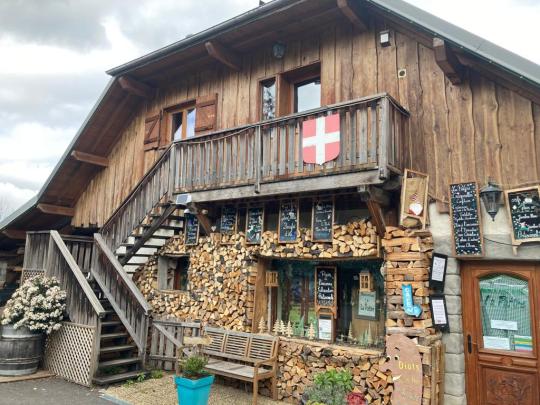

sehr sinnvolle Müllsammelstellen, Denkmäler zu den Jubiläen der Verschwisterung (die Monumente aus Sandstein sind sicher mühsam herbeigekarrt worden). Es gäbe sicher noch mehr zu entdecken, aber dann ist es schon 9.00 Uhr und das Programm startet. Pünktlich setzt Regen ein, an den man nach dem gestrigen Tag gar nicht mehr geglaubt hatte. Er hätte uns heute durchaus noch verschonen dürfen... Es geht zunächst zu den Gorges du Fier. Der Fier ist ein Fluss, der in der Nähe von Annecy, bei der Burg Montrottier,
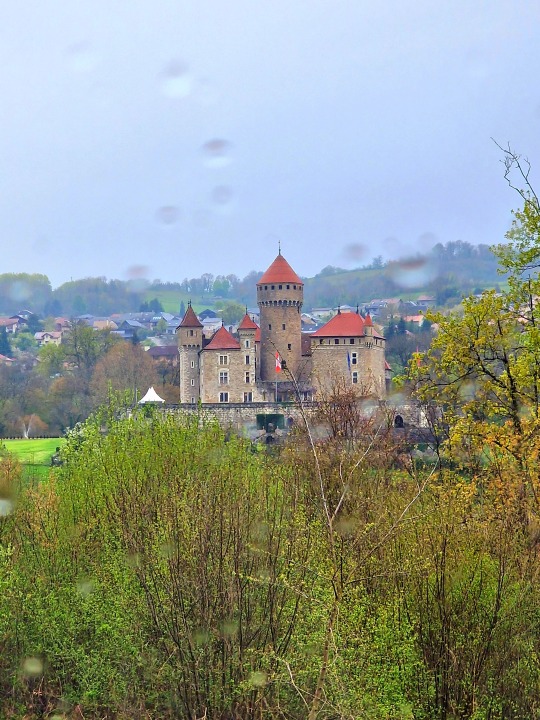
im Laufe der Zeit eine tiefe Schlucht in das Kalksteingebirge gegraben hat. Die Schlucht ist über einen sehr engen Steg begehbar, auf dem sich die Besuchermassen aneinander vorbeidrängen. Der immer stärker werdende Regen macht Gesteinspassagen glitschig, und so sucht man einen schnellen Abgang aus der Schlucht.
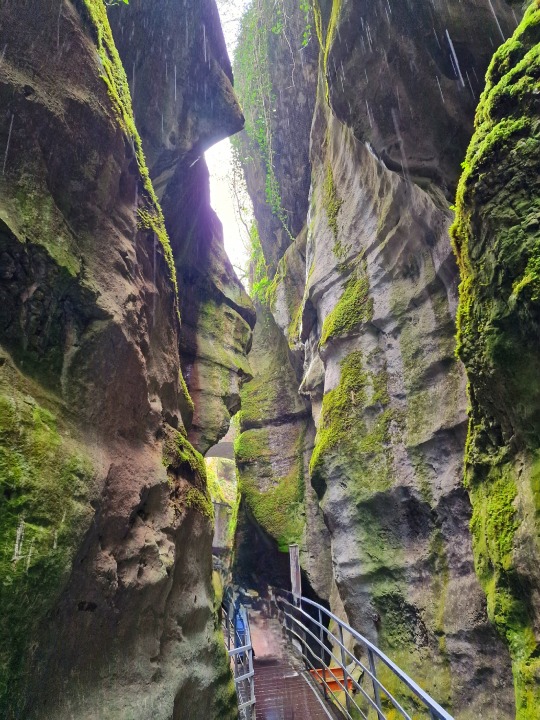
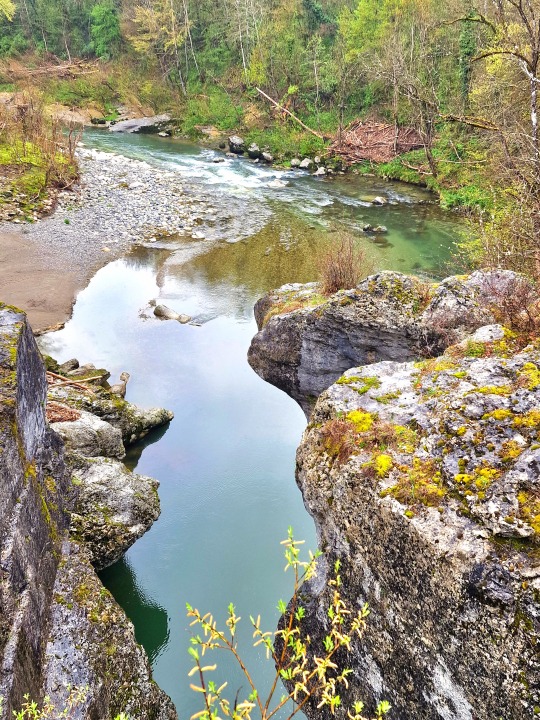
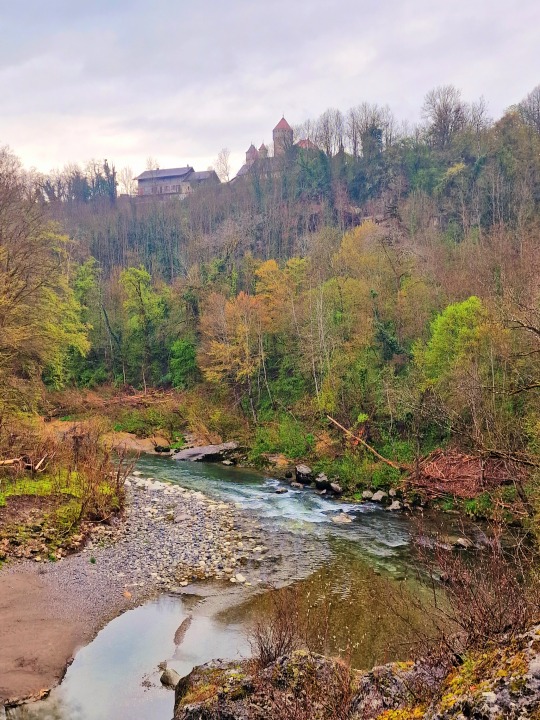
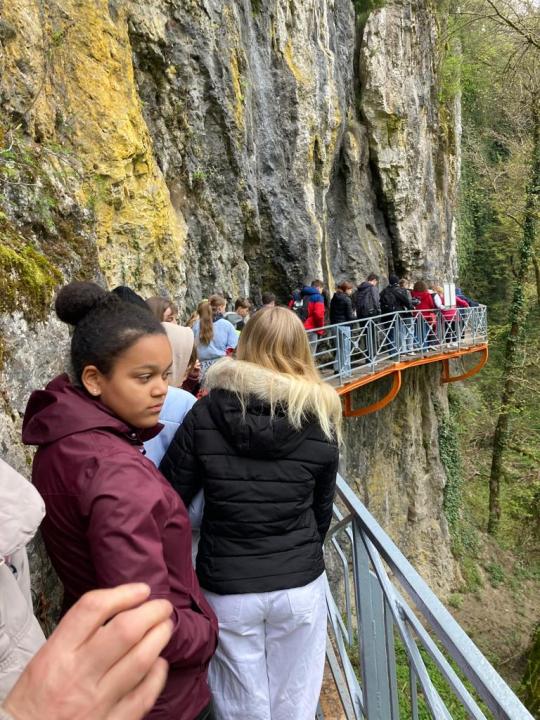
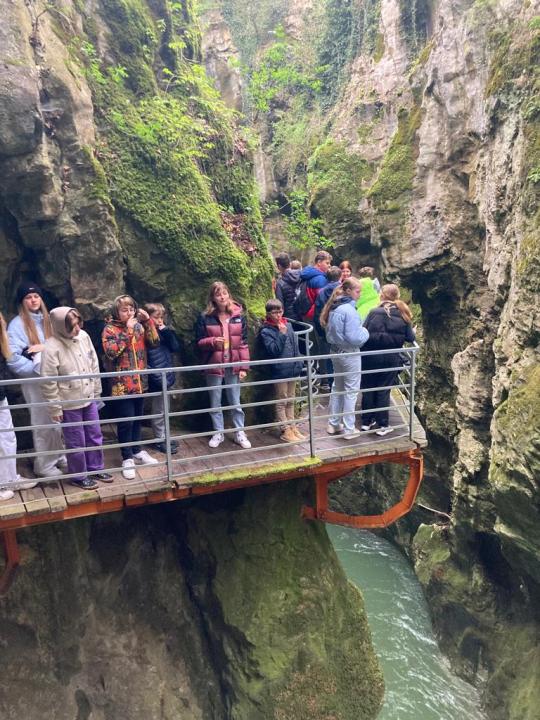

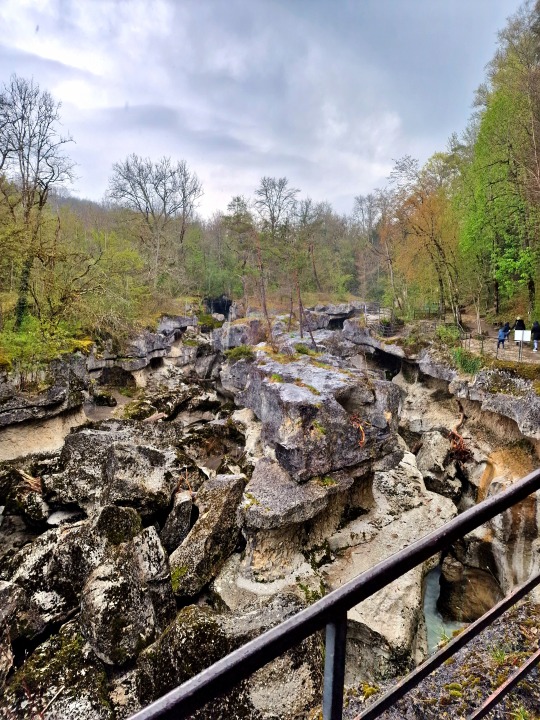
In der Hoffnung auf nachlassende Niederschläge wird das nächste Ziel angesteuert, der Jardin secret in Vaulx.
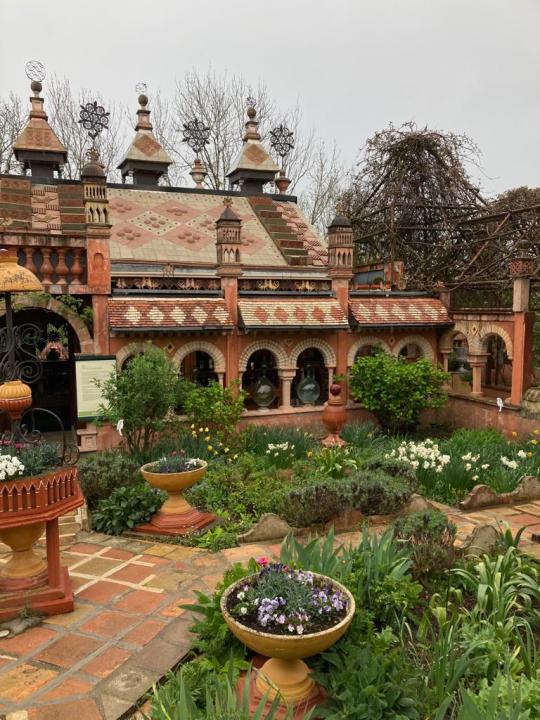

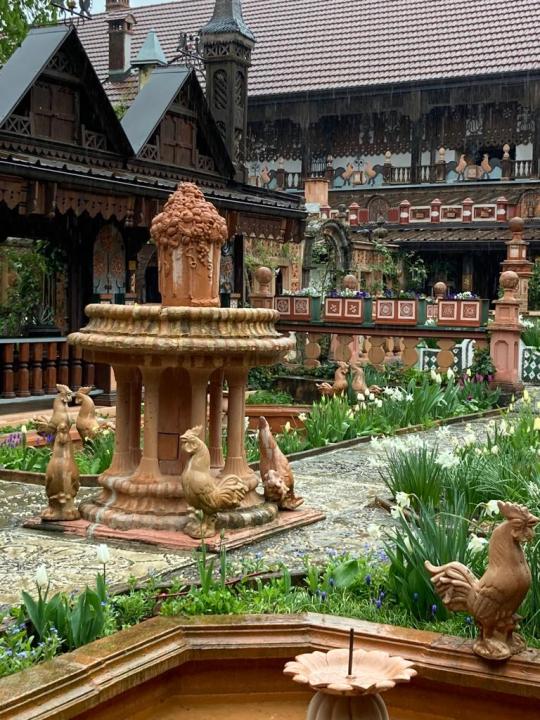
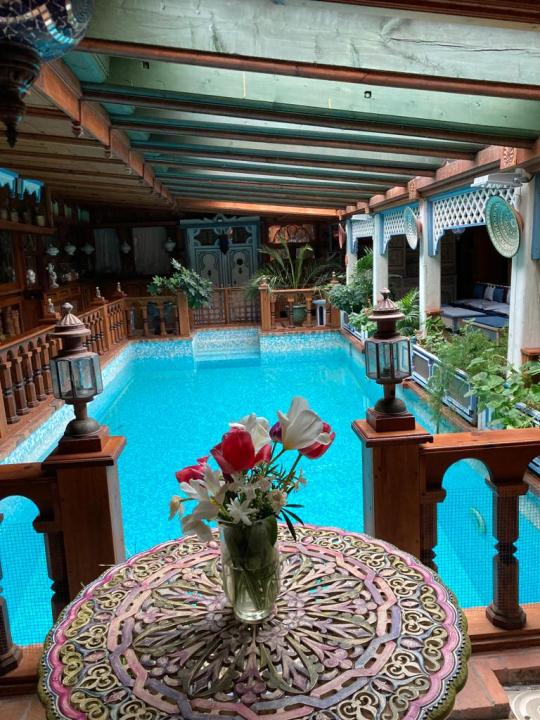
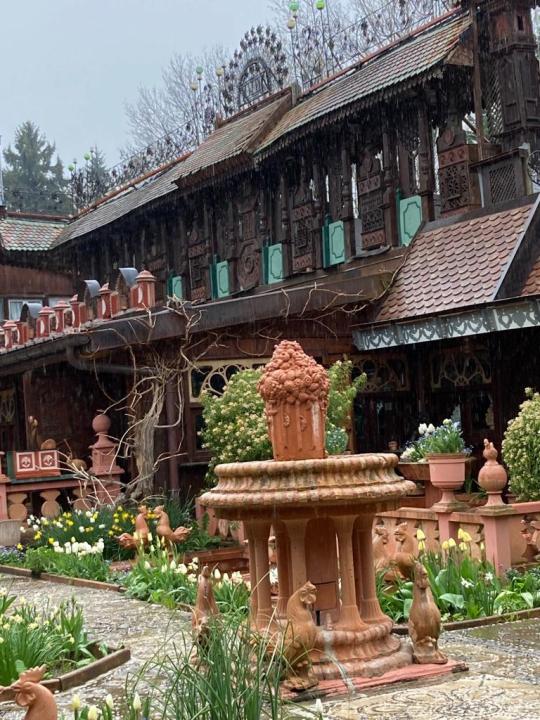
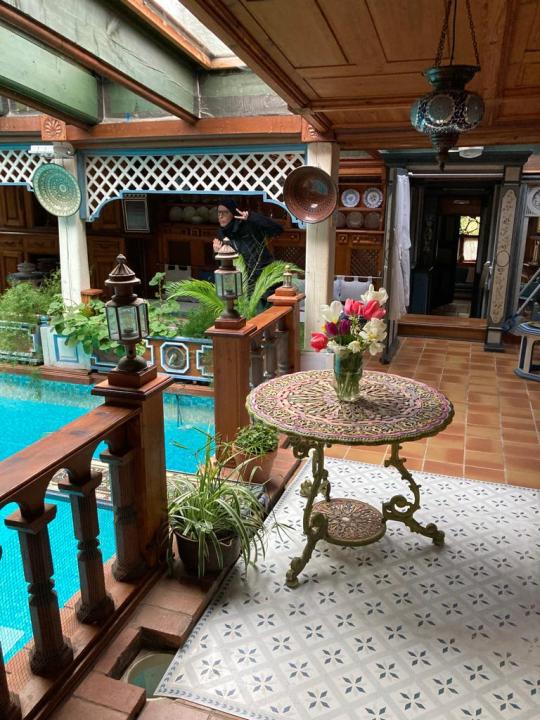
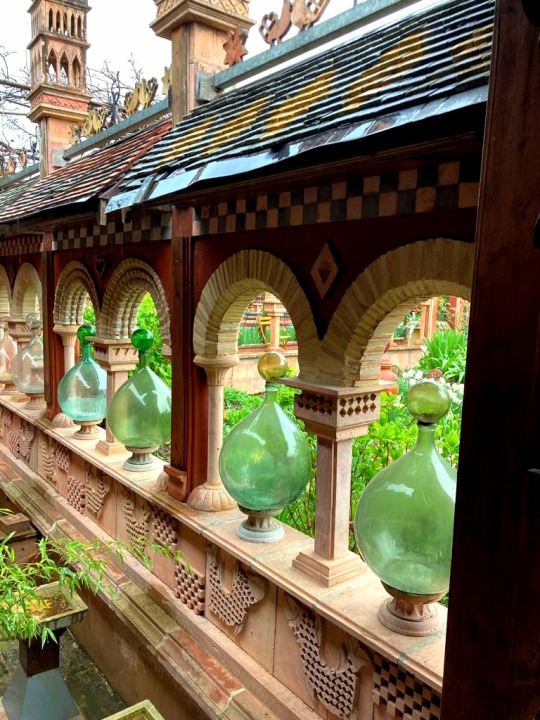
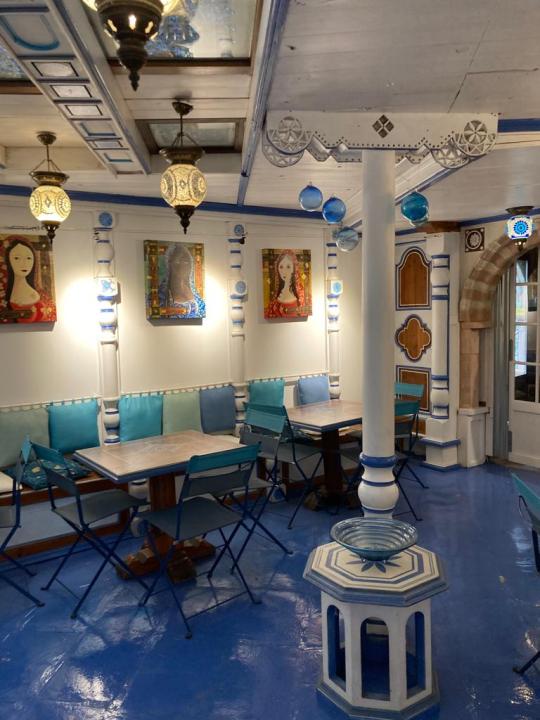

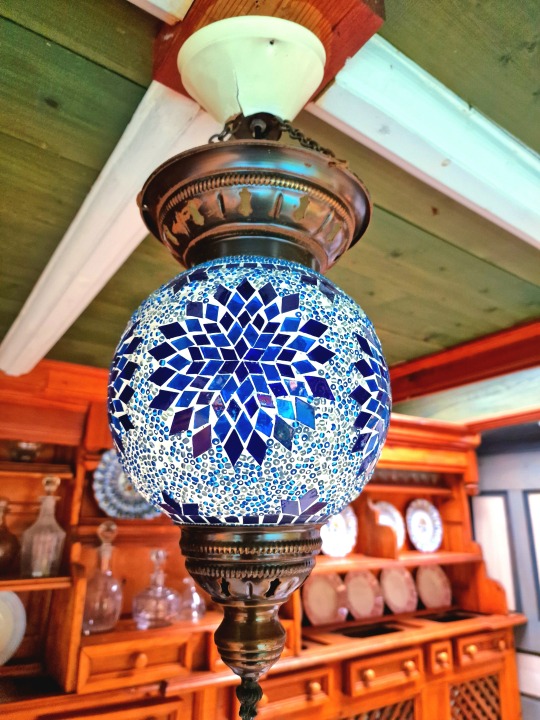
Eine Familie mit mehreren Generationen hat sich hier, zunächst vielleicht aus Heimweh, ein arabisches Paradies aus unterschiedlichsten Materialien, Pflanzen und Farben geschaffen, das irgendwann aus der Privatheit heraus der Öffentlichkeit zugänglich gemacht wurde. Hinter jeder Ecke bieten sich hier neue fantastische Motive für Fotografien. Es wäre noch viel schöner, hier im Sonnenschein sitzen zu können, aber na ja, we need rain. Ein bisschen erinnert der Ort an den idealen Palast des Briefträgers und Autodidakten Ferdinand Cheval, der im 19. Jh in mehr als dreißig Jahre südlich von Lyon seinen Lebenstraum eines Märchenschlosses umsetzte. Es gibt eine tolle Verfilmung seines Lebens! Und ein bisschen erinnern die Projekte auch an das Gite Les prés aux clercs, unserem Feriendomizil, das von unserer Vermieterin Anne in achtjähriger Detailarbeit geschaffen worden ist. Lebensprojekte eben!
Wir flüchten vor dem Regen naclh Aix les Bains, tanken, gehen in den Supermarkt mit soooo vielen Sachen, suchen in der Innenstadt nach einem tabac für Victor - ja, in Frankreich werden Tabakwaren immer noch nur in begrenzten Geschäftsstellen verkauft, trinken schnell einen Cafė crème und fahren zurück nach Trévignin zur Jugend, die sich dort im Dorfgemeinschaftshaus die Zeit vertreibt, zwischen der vereinbarten Abholung durch die Gastfamilien um 17.00 h, die sich bis um 19.00 hinziehen kann. Aber es gibt eine Tischtennisplatte,
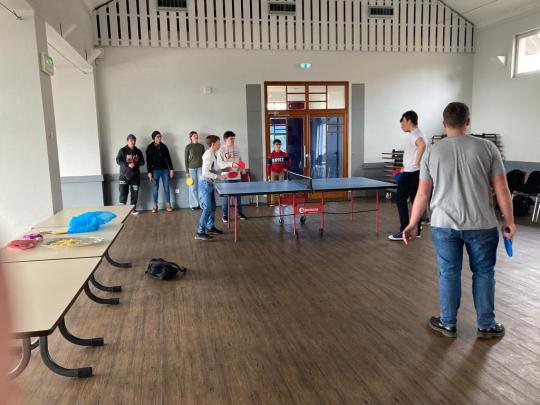
Chips und Erfrischungsgetränke. Von letzteren landet ein volles Exemplar auf dem Boden und platzt dort auf. Eine einmalige Gelegenheit für einen Kevin und Angelika, in Frankreich Putzaktionen durchzuführen. Die Chance kriegt nicht jeder.
0 notes
Text

Victor Capoul & Cécile Ritter-Ciampi
Victor Capoul (1839-1924) was a French lyric tenor whose thirty-five-year career spanned the latter part of the 19th century. Born Joseph Victor Amédée Capoul in Toulouse, he received his musical education at the Paris Conservatory, where he studied with renowned French tenor Alphonse Révial (1810-1871). Following his graduation, Capoul made his debut at the Opéra-Comique as Daniel in Adam’s Le Châlet in 1861. The young tenor became a popular artist with the theater and remained a regular member of the company for the next nine seasons. In 1871 he made his first appearance in London as Gounod’s Faust at Drury Lane and made his American debut later that year at the New York Academy of Music as Wilhelm Meister in Mignon. In 1877, Capoul made his Covent Garden debut as Auber’s Fra Diavolo, also singing Almaviva in Barbiere di Siviglia, Ernesto in Don Pasquale and Elvino in La Sonnambula that same season. Capoul returned to New York in 1879 to sing the role of the poet Ange-Pitou in Charles Lecocq’s La Fille de Madame Angot at Grau’s French Opera Company. The tenor’s Metropolitan Opera debut occurred during the company’s inaugural season, on October 27, 1883 as Faust. Capoul sang 25 performances of six roles during his first season with the Met…the aforementioned Faust, Wilhelm Meister, Almaviva, Alfredo in La Traviata, Edgardo in Lucia di Lammermoor and (although one wonders how he negotiated the demands of the role) Enzo in La Gioconda. Although his acting and stage deportment were praised, critics complained of the tenor’s “almost inaudible half voice” and remarked that “ his singing was often short of the enjoyable.” It is not surprising that when Capoul returned to the Met for the 1891/92 season, he was relegated to the secondary roles of Tybalt in Roméo et Juliette and Cassio in Otello. His final appearance with the company was a concert on April 24, 1896. During a Testimonial Performance to Henry E. Abbey and Maurice Grau, Capoul sang as part of the Soldiers’ Chorus from Gounod’s Faust. Considering that he had made his debut with the company in the title role of this same opera some thirteen years previously, this seems something of a sad comedown. Capoul remained in New York for several years, having been appointed opera coach and professor of voice at The National Conservatory of Music of America in 1892. His singing days now behind him, Capoul returned to Paris in January of 1900, making a bid for the position of General Director of the Opéra-Comique. When he was declined, his old friend and colleague Pierre Gailhard appointed him Director of Theatrical Studies at the Opéra de Paris. Now regarded as one of the leading stage directors for French and Italian opera, Capoul returned to New York in 1906 to direct productions for Hammerstein’s Manhattan Opera Company. Sadly, he was plagued by increasing deafness that greatly hampered his artistic activities. He retired to the south of France and lived quite comfortably until wartime investments stripped him of his fortune. To raise a bit of capital, the tenor tried to auction off some of the mementos from his career. When there were no takers, he angrily burned all of his costumes, scores and photographs. Capoul lived out his final years on his little farm near the village of Pujaudran-du-Gers, subsisting on a small pension. Penniless, bitter and forgotten, he passed away on February 18, 1924, just a week shy of his 85th birthday, a tragic end for such a great artist. Victor Capoul boasted a diverse repertoire of nearly 40 roles in opera and operetta, including Tonio in La Fille du Régiment, Georges in La Dame Blanche, The Duke in Rigoletto, des Grieux in Manon, Lionel in Martha and the title roles in Meyerbeer’s Robert le Diable and Méhul’s Joseph. He created the tenor leads in a number of works such as Gounod’s La Colombe and Offenbach’s Vert-Vert. In addition to Paris, London and New York (the cities where he spent most of his career), Capoul travelled to Monte Carlo, Brussels, Moscow,
St. Petersburg, Vienna and Quebec. He also co-authored the librettos for Godard’s opera Jocelyn and Camondo’s operetta Le Clown. Although the tenor never possessed an extraordinary voice, he did cultivate a remarkable technique and built his reputation on artistry, musicality and magnetism. His recorded legacy consists of a single aria, “Oh! Ne t'éveille pas encore” from Godard’s Jocelyn. Four takes were recorded for Fonotipia in Paris in 1905, two of which are known to survive. Although Capoul’s vocal resources are greatly diminished…not to mention the fact that he was nearly stone deaf…he manages to give a fascinating performance, leaving us something of a time capsule from the world of 19th century French opera.
#Victor Capoul#Conservatoire de Paris#Opéra comique#Le Chalet#La fille du régiment#Gaetano Donizetti#La part du diable#Daniel Auber#La dame blanche#François-Adrien Boieldieu#Le pré aux clercs#Ferdinand Hérold#L'étoile du nord#Giacomo Meyerbeer#La grand'tante#Jules Massenet#Le premier jour de bonheur#jacques offenbach#Vert-Vert#Charles Gounod#The Barber of Seville#Gioachino Rossini#Roméo et Juliette#Faust#Royal Opera House#Metropolitan Opera#Covent Garden#lucia di lammermoor#Cécile Ritter-Ciampi#Paris Opera
5 notes
·
View notes
Text
Read the synopsis of Le pré aux clercs and...this opera is trippy.
#le pré aux clercs#ferdinard herold#I know it’s the original French Wars of Religion opera but it seems...very trippy#need to see if there’s a video and watch this at some point#basically it’s 1582 (not a typo) Paris and everyone is trying to get married and stuff#and Marguerite de Valois is a mezzo for some reason#who’s hardcore trying to get the leading duo married#and it somehow works???#like this ends happily???#and it’s very weird???#opera#opera tag#opera comique#French wars of religion
7 notes
·
View notes
Photo
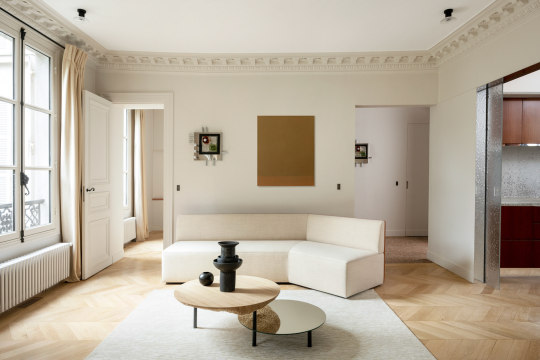
Rue du Pré-aux-Clercs is a minimal interior located in Paris, France, designed by Vincent Le Bourdon. The space features geometric volumes, seen throughout the furniture, built-ins and even the herringbone floors. The angles form beckoning signals, subtly controlling the flow of the interior. Dark wood paneling is used within the kitchen to serve as a contrast between the various adjacent programs.
37 notes
·
View notes
Text
Journal ordinaire et confus de mon confinement (pré et post compris)…II/
Journée n° 7
Accident
L’homme est dur au mal
Il a toujours su qu’il se ferait mal un jour
Il n’a pas vu la pierre
Son vélo a fait un salto avant, lui aussi
En retombant il a rencontré un arbre
Il n’a pas paniqué
Transfert à l’hôpital par pompiers inquiets
Sportif de haut niveau
Déjà cinq fractures
Habitude de forcer l'organisme
Jusqu'à la douleur
Corset et fauteuil
Marie s'occupe de son compagnon
Trois mois d'arrêt
Il minimise l’événement mal
Et les conséquences possibles
https://www.facebook.com/yves.rebouillat.9/posts/10218783069266110
Journée n° 8
Idée de concours, concours d'idées
Sans concours mais avec des d'idées.
"Manières de Dire" lance une opération littéraire d’envergure - à l’égal de la notoriété de "MdD" -...
Journée n° 9
Beaucoup de pluie aujourd'hui, le froid a fait un retour inattendu, le vent est enfin tombé.
L'hiver s'est rappelé à nos mauvais souvenirs.
Mais envoie un signe : au bout du chemin, la lumière du soleil en éclaireur, déchire la masse nuageuse et nous dévoile un azur ardemment désiré (cf. la photographie).
Journée n° 10
G. Sacrebleu !
N'aimant pour lui aucun compliment
À d'autres il en prodigue d'éminents
S'interdisant la moindre auto-empathie
Qui s'il s'y essayait vraiment lui ferait
Derechef prendre un nouveau parti
À vouloir être modeste, est-on parfait ?
Journée n° 11
J'ai un problème avec le clavier de mon ordinateur. Ou mes doigts, je ne sais plus. Je perds du temps .j’écris mal. Je m’énerve. Bon, j’arrête. Je verrai demain. S’énerver contre les chose ne mène à rien.
Journée n° 12
À Lésia !
Ici les vents sont très forts aussi.
Ils ne soulèvent pas la mer. Et n'appellent pas à contemplation ni à la photographie.
Ils menacent de déraciner des arbres qui pataugent dans la glaise détrempée.
Pas de bande son de rêve non plus, c'est de cauchemar qu'il s'agit et je n'aime pas Wagner...
Vivement le retour en Corse !

Journée n° 13
Bonjour Lésia
As-tu reçu et lu ma "Lettre d'Information" qui appelle à des contributions sur le thème des "Retrouvailles" (personne, objet, parfum, texte, bruit,...) ?
J'aimerais beaucoup que tu te joignes à nous à nouveau à cette occasion.
Puis-je compter sur toi ?
Bises.
Journée n° 14
Plaise aux Dieux et aux Maîtres de l'Anarchie que, confinés dans des espaces qui se réduisent comme des peaux de chagrin, nos contemporains ne réapparaissent pas sans avoir réfléchi ni lu les meilleurs billets "Manières de Dire".
Quand bien même auraient-ils confié leur corps aux navires russes*...
*J'emprunte le jeu de mots à A-L et à Potemkine le lien entre le premier et le second paragraphe
Journée n° 15
"Ma" librairie me manque.
Son nom "Ombres blanches"
Une institution au centre de Toulouse
Qui a colonisé tout un quartier
A relié des maisons,
Dans un labyrinthe de salles et de couloirs
Un haut lieu de compétences, d'aventures
Un enchevêtrement des cultures par le livre
Où je m’enivrais des fragrances des papiers, de ses encres et de ses colles
Immense thésaurus du monde réel-fictif
Raconté, décrit, fantasmé, imaginé, expliqué, filmé, photographié, "problématisé"...
Temple du roman noir et du roman blanc
Des arts, des idées
...et j'en passe.
Journée n° 16
Alors, oui, j'ai toujours essayé de me retrancher, de me soustraire de ce fragment d’humanité-là, de me protéger de m'en isoler. Mais elle est nombreuse elle est partout. Il faut la craindre comme le virus. Elle déforme tout, salit, cogne, hurle, éructe, se jette sur les pâtes au supermarché et les papiers toilette (pourquoi, enfin !?), casse les radars, les vitrines des banques, les commerces les restaurants, elle éborgne, énuclée, tire à bout portant, fait tomber les vieilles dames, étouffe, roule sans permis ni assurance, se regroupe quand il faut s'isoler, demande tout à la protection sociale, à l'État qu'elle maudit.
Ce virus que l'autre partie de l’ humanité saura terrassé est un révélateur. À l’instar des guerres.
Journée n° 17
A dire vrai j'ai toujours été, d'une certaine manière, confiné.
Une caractéristique notable de l'humaniste atteint d’un soupçon de misanthropie est de se mettre à l'abri de ce que l'humanité a de pire : les racistes, les rabat-joie, les bruyants, ceux qui parlent haut, les insincères, les je-sais-tout auto-proclamés, les pingres, les tricheurs, les voleurs, les criminels, les haineux, les anti-Lgbtqia, les fascistes, les intolérants, les profiteurs, les fainéants, les barbares, les incultes par choix, les inventeurs d'explications, les explicateurs du monde et les commentateurs de tout, les buveurs d’alcool d’anis sans eau, les pédophiles, tous les clercs et quelques notaires, les méchants, les brutes, les impolis, les rués sur les rayons des magasins et les acteurs de marchés noirs pendant les guerres, les acheteurs de vins en cubitainers, les shootés au pouvoir, au fric, au luxe, les faux riches roulant dans des autos allemandes vieilles de quinze ans, les proxénètes, les dealers, les voleurs à la tire, les conducteurs inciviques, délictueux, les inattentifs aux autres...
En riant, ma fille me faisait téléphoniquement remarquer, au premier jour du confinement, dans le cadre de la deuxième confrontation géante et mondiale aux virus, tout juste cent ans après la première que vivre seul, je savais plutôt faire.
Notez, dans une humanité, ôter (mentalement) les gens qui nous insupportent, ça fait un sacrée amputation.
Journée n° 18
Virus, olibrius, gugusses, rustres, Vilnius, j’aime bien ces mots... cherchez l’intrus.
1 note
·
View note
Photo
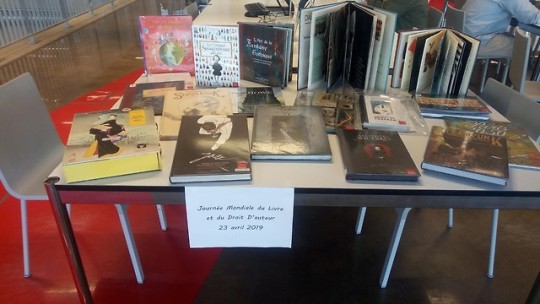
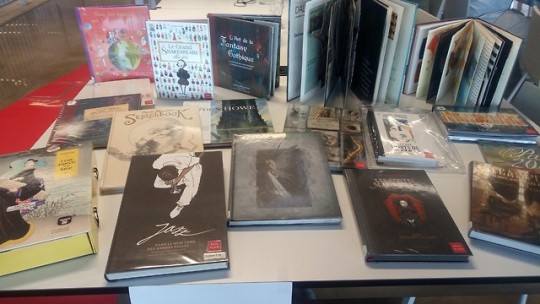
!EVENEMENT!
Le mardi 23 avril 2019 est la Journée Mondiale du Livre et du Droit d’Auteur.
Celle-ci a été créé il y a 24 ans lors de la Conférence Générale de l’UNESCO à Paris en 1995. Le choix de cette date ne s’est pas fait au hasard mais pour sa forte symbolique puisqu’il s’agit de la date anniversaire de la mort de Shakespeare et Cervantes, tous deux décédés le 23 avril 1616. C’est aussi la date de naissance d’autres écrivains comme Maurice Druon en 1918 et Manuel Mejía Vallejo en 1923. Petite anecdote, c’est aussi le jour de la Saint Georges, jour où une jolie tradition catalane veut que les libraires offrent une rose à toute personne qui achète un livre.
Pour cette 24e édition, c’est la ville de Sharja aux Emirats Arabes Unis qui a été choisie comme capitale mondiale du livre pour un an à compter du 23 avril 2019.
Vous pouvez trouver plus d’informations au sujet de la Journée Mondiale du Livre et du Droit d’Auteur sur les sites de l’UNESCO et des Nations Unies.
Pour célébrer le livre à leur manière, le Centre de l’Illustration vous propose une sélection d’ouvrages chers au cœur de ses bibliothécaires, que vous retrouverez exposés au 5e étage de la Médiathèque André-Malraux :
- Les dix droits du lecteur – Daniel Pennac & Gérard Lo Monaco, éd. Gallimard Jeunesse (2012)
- L’art de la Fantasy Gothique – Jasmine Beckett-Griffith, éd. (2009)
- John Howe : sur les terres de Tolkien – Stéphanie Benson, Christophe Gallaz & Christopher Lee, éd. L’Atalante (2002)
- Cent aspects de la Lune – John Stevenson & Yoshitoshi, éd. Citadelles & Mazenod (2018)
- Les Contes Macabres – Edgar Allan Poe & Benjamin Lacombe, éd. Soleil (2010)
- Sketchbook – Pascal Moguérou, éd. Au bord des continents (2008)
- Steampunk – Antoni Cadalfach, éd. Le Pré aux Clercs (2015)
- Les Lettres des Fées Sechées de Lady Cottington – Brian Froud & Ari Berk, éd. Glénat (2008)
- Le grand Shakespeare illustré – Caroline Guillot, éd. Chêne (2016)
- Fashion addict – Jessica Jones, éd. Milan (2011)
- Couleurs – Francesco Pittau & Bernadette Gervais, éd. Albin Michel Jeunesse (2014)
- New York la nuit – Arnaud Roi & Louis Thomas, éd. Milan (2016)
- Jazz : dans le New York des années folles – Robert Nippoldt & Hans-Jürgen Schaal, éd. Taschen (2013)
- Dali pop-up – Courtney Watson McCarthy, éd. White Star (2014)
- Paris 2050 : almanach d'anticipation – Davide Cali (texte) & Ale + Ale (illustrations), éd. Actes Sud Junior (2014)
- Blue Note : les dernières heures de la prohibition (tome 1) – Mathieu Mariolle et Mickaël Bourgouin, éd. Dargaud (2013)
- Le Bestiaire Marin : histoires et légendes des animaux des mers et des océans – Jean-Baptiste de Panafieu, éd. Plume de carotte (2008)
- Tous les humains ont les même droits : la Déclaration universelle des droits de l'homme de 1948 racontée aux enfants – Marie-Agnès Combesque, images de Clotilde Perrin, éd. Rue du Monde (2008)
- Le temps des fées : 15 années de croquis, aquarelles, peintures – Sandrine Gestin, préface de John Howe, éd. Au bord des continents (2008)
À voir jusqu’au 10 mai 2019 !
#illustrations#arts#Coups de Coeur#bibliotheque#centredelillustration#strasbourg#journéemondialedulivre#journéedulivre#littérature
2 notes
·
View notes
Text
Opera Simplified #7: Les Huguenots—Notes, Act III
** Note: this act was originally supposed to be prefaced with a brief introductory scene taking place inside the Saint-Bris house on the morning of the same day, although the scene was cut prior to the premiere and to my knowledge has never been performed.
In the scene, Valentine inadvertently witnesses her father and Maurevert (whom you’ll meet in just a bit) unsuccessfully attempt to assassinate Admiral Coligny (see notes for Act I) while she is being dressed for her wedding. The two would-be assassins return to the house and Saint-Bris yells at Maurevert for a bit before the latter leaves and then Valentine begs him not to make her marry Nevers. This goes over about as well as you think it does.
*** At the time this opera is set, the Pré-aux-Clercs was a notoriously popular place for duels, and by the 19th century this had captured the public imagination. So much so that just four years before the premiere of Huguenots, Ferdinand Hérold had written a wildly popular opéra comique about the French Wars of Religion and dueling at the time called Le Pré-aux-Clercs. Unlike Les Huguenots, it is a comedy. (Coincidentally or not, Marguérite de Valois is also a character in that opera, which is set in 1582, ten years after the events on which the opera under current discussion is based.)
**** “Dieu le veut!” (“God wills it!”). This is the first instance of that phrase in the opera. Keep it in the back of your head. Those will be the watchwords for the remainder of the opera.
***** The assignment of these lines differs between different libretti, scores, and performances. However, given that Maurevert was the one to initially hint at plans being made, I have decided to assign these lines as what makes the most sense when taking that into consideration.
****** The following solo scene for Marcel was cut before the premiere and no part of it was performed until 2011. The scene has still never been performed in its entirety in performance; the linked audio clip cuts about half the scene. However, because I like this scene and because I have all the text for it, I have decided to include it in its entirety. If you would like to experience this how most performances go, skip this section and go straight to Valentine’s next entrance.
******* This is presumably a reference to Genesis 44, in which Benjamin, the youngest of Jacob’s 12 sons, is the victim of a trap set by Joseph in order to test his once-wicked brothers. However, the reference is presumably simply about being the unknowing victim of a trap; the scheme in this opera is considerably less benign than Joseph’s test.
******** Note: The four seconds are initially unnamed in the libretto but are later identified as Tavannes, Cossé, de Retz, and Méru. The librettists made a mistake here: obviously, Tavannes, Cossé, de Retz, and Méru are all Catholic noblemen, and thus it would be exceedingly unlikely that Raoul could have gotten any of them to be his seconds. The usual resolution is to either ignore that part of this stage direction or (and I like this better) for two of the nobles to pretend to offer themselves as Raoul’s seconds in order to lull him into a false sense of security. My additional headcanon is that the four nobles played round-robin rock paper scissors in order to decide who had to pretend to be Raoul’s seconds.
#opera#opera tag#les huguenots#notes#meyerbeer#giacomo meyerbeer#augustin eugène scribe#émile de saint-amand deschamps
1 note
·
View note
Text
Yves de Kerdrel : un portrait
Décrit par ses confrères comme manipulateur, cynique, opportuniste, menteur, orgueilleux, méprisant, humainement épouvantable et indigne du métier de journaliste, Yves de Kerdrel est un chroniqueur, peut-être un courtisan, qui aime à croître dit-on, dans l’ombre des puissants dont il tirerait avantage. Enquête sur un chroniqueur qui semble avoir oublié de pratiquer l’éthique et la morale dont il aime tant à se prévaloir.
Un homme comme un autre ?
Yves de Kerdrel, homme de petite noblesse bretonne, est un chroniqueur qui irrigue la presse française de ses analyses et prises de positions souvent cyniques et aime à citer les grands auteurs pour illustrer sa pensée.
Bientôt sexagénaire, l’homme un peu rondouillard affiche la diction hésitante d’un garnement pris la main dans la boîte à cookies, mais peut se montrer aussi sémillant qu’agressif sous ses faux airs de clerc de notaire en pré-retraite.
Des études sans grand relief
Diplômé de la prestigieuse ISG, 28ème école de commerce au classement des écoles de commerce françaises selon le magazine L’Etudiant (juste après l’ESCE Business School mais avant la South Champagne Business School) il est également titulaire d’une maîtrise en droit des affaires de l’université Paris 2 Assas, connue pour être régulièrement associée à des mouvements d’extrême-droite et qui vit naître le GUD.
Un journaliste amateur de tradition
Kerdrel fut naguère directeur de la rédaction du trimestriel “Régions Magazine” et de l’influent “Jours de Chasse”. Ancien chroniqueur au Figaro, aux Echos, à I-Télé à Radio-Classique ainsi qu’à RT France, il fut aussi ancien directeur de la rédaction du défunt Journal des Finances. Il est surtout connu comme ancien directeur de la rédaction de l’hebdomadaire Valeurs Actuelles dont il rêvait de faire “le premier hebdo de France” en l’orientant sur l’aile droite des conservateurs.
Wansquare et La Lettre de l’Expansion
Kerdrel contribue aujourd’hui à Sud Radio, et dirige une petite maison de publication numérique dénommé Wansquare, consacrée à la finance, à l’économie et aux affaires. La société Wansquare publie deux titres hebdomadaires : la lettre éponyme Wansquare, soi-disant “leader de l’information économique” dont on verra plus bas qu’elle est en réalité bon dernier du sujet, ainsi que La Lettre de l’Expansion, qui malgré son nom n’a plus rien à voir avec “L’Expansion”, le défunt magazine économique propriété de l’Express.
Le pouvoir et l’argent
Il fut également membre du comité d’éthique du Medef et de la commission Attali, ce qui le mit au contact des puissants et lui permit, selon certains, de se façonner une morale et une éthique qu’il sait adapter aux circonstances. Voici ce qu’en dit l’éditorialiste Carmine Saint-Léger à propos des hommes de pouvoir qu’il côtoie : “Il les aime sous toutes les coutures, en dollars, en yuans, en Rolex, en petites coupures et en tenues de gala.”
C’est ainsi que les puissants, le pouvoir et l’argent reviennent souvent dans le parcours du journaliste, au point de dessiner l’axe central de son panthéon personnel.
Selon certains de ses confrères, Kerdrel se serait affranchi depuis des lustres des fondamentaux du journalisme, au premier rang desquels l’indépendance à l’égard des pouvoirs politiques et économiques et le respect du lecteur.
Quelques soucis juridiques
Une attitude légère, pour ne pas dire coupable, illustrée par sa condamnation en 2017 pour injures envers deux journalistes du journal Le Monde qu’il avait traité de “pseudo-journalistes” et de “valets” d’un “cabinet noir” contre Nicolas Sarkozy, allant même jusqu’à révéler l’origine de leurs informations au mépris d’une autre règle fondamentale du journalisme, le secret des sources.
Les tribunaux ne sont donc pas inconnus, lui qui fut condamné en 2015 par la 17e chambre correctionnelle de Paris pour diffamation, provocation à la discrimination et à la haine ou à violence.
La même cour l’avait déjà condamné dans une autre affaire pour provocation à la haine raciale, bien que cette condamnation ait elle été annulée en cassation deux ans plus tard. En l’occurrence, c’est rien moins que l’Union des Etudiants Juifs de France qui avait fait citer le sieur Kerdrel pour répondre du délit de provocation publique à la discrimination, à la haine ou à la violence nationale, raciale ou religieuse.
Kerdrel et ses amis
Kerdrel connaît deux types d’amis : les hommes politiques, et les hommes d’affaires. A leur tour, ils sont divisés en deux camps : ceux auxquels il plante des couteaux dans le dos, et ceux dont il cire les chaussures. En voici deux exemples : dans le premier camp Emmanuel Macron, Président de la République, dans l’autre Denis Kessler PDG de SCOR, société de réassurance.
La liste des “amis” de Yves de Kerdrel ne se limite bien entendu pas à ces deux personnalités, mais ce qui s’applique à ceux-là s’applique à bien d’autres. Avec une éthique à géométrie variable et une morale qui s’accommode de tout, le sieur Kerdrel sait à merveille se fondre et se confondre dans les méandres du pouvoir, estiment ses ennemis.
Originally Posted: https://www.journaliste.lol/
0 notes
Link
V2F Itineraries | France | Things To Do | 12 Day Guide
France is a beautiful country, full of lush green gardens, high snowy mountains and cobblestoned Parisian streets. It is home to many world-famous monuments such as The Eiffel Tower and The Louvre, and contains some hidden gems in the form of quaint cafes (yet full of personality) and Gothic-style chateaus. In this article, we’ll take you through what might be one of the best 12-day trips to France of your life. A lot of the charm in visiting France is also in its travelling – the rolling hills and green landscape of the countryside. This is why we’ve curated a combination of lively travel and must-see spots for you below! If you’d like to visit France after reading this article and require a visa, make sure to check out our services on the France visa – you can also obtain a France visa online (as online as possible) with our help!
Day 1 Land in Paris’ Charles de Gaulle Airport in the morning – with our help on obtaining the France visa for Indians, we’re sure you had a hiccup-free flight! Next, catch a glimpse of the top sights of Paris whilst on a boat ride across the Seine River. It is 775-kilometre-long, and snakes through most of Northern France. After a tiring flight and a relaxing boat ride through canals and streets, watch the sun set in the most famous landmark of Paris, the Eiffel Tower! This tower is arguably the most famous landmark of the whole country, so it seems fitting to visit it first. It is also lit up in the night, and can be seen from anywhere in the city – truly a beautiful sight. If you can, make sure you go up to the viewing rooms to catch a glimpse of the whole of Paris under your feet.
Day 2 We start the day with a walk through the pastel-bricked, charming Paris Old Quarters – including Ile Saint-Louis, Quarter Latin and Le Marais. This does take quite a bit out of your morning, but you probably won’t realise it with the old-timey air floating around these parts of the city. As the afternoon approaches, we suggest attending a croissant-making / French baking workshop! The French are known for their love and interest in food, what with all the different techniques of sweet and savoury baking that originated here. End the day enjoying a filling supper and people-watching at Cafe de Flore. It is a quaint corner establishment at the Latin Quarters, so you wont need to travel too far. Fun fact! The cafe is also home to some of Paris’ important literary history, which you may find out more about when you go there.
Day 3 Day 3 marks our first day outside Paris – but we won’t be going too far just yet. Take an RER train to Versailles after a nice, well-rested night – the journey only lasts about 45 minutes. Here, visit the Palace of Versailles first, in all its old-time charm. Make sure to not miss the Hall of Mirrors whilst touring around! Behind the Palace lies the Grand Canal of Versailles – this is a great place to learn more about Versailles’ history and have some filling lunch. After all the sightseeing, relax and take a short evening walk to Marie Antoinette’s Estate, just 15 minutes through the lush greenery of the palace and its countryside surroundings. You could, of course, eat some cake in memory of her famous “let them eat cake!” statement 😉 After you’re done for the day, take that short train ride back to Paris to lie down for the night.
Day 4 Day 4 also has a bit of short travelling from Paris: catch a 45-min train to Fontainebleau. Visit the Fontainebleau Palace, which includes parts that date back to the 1100’s! Also tour the theater, Marie Antoinette’s Turkish boudoir (yes, we see her influence again today!) and the Napoleon Museum whilst you’re in the grounds. Much of the sights to see are close to each other – within walking distance – so you can spend maximum time on viewing and minimum on the commute. An early evening trip back in time at Tacot des Lacs might be more relaxing than you thought! Around 4:10 is when the last ride is. The train takes you through lush greenery and educates you on different trains and locomotives from the previous centuries – after the train ride is over, come back to Paris to retire for the night.
Day 5 In the morning, catch an hour-long bus from Paris to Orléans – the city liberated by Joan of Arc. You probably won’t need to show your passports for bus trips, but make sure to carry the one which contains your France visa just in case. Once you reach, tour the many gothic-style chateaus and cathedrals including Hôtel Groslot, Cathédrale Sainte-Croix d’Orléans and Maison de Jeanne d’Arc. This will probably take up most of the day, so in the evening you can choose to walk around the Parc Floral de la Source while the sun sets. This garden and butterfly house is sure to be a hit with people of all ages, with kids areas included. After a relaxing stroll, head back to Paris and back to your hotel.
Day 6 Finally, we are exiting the city of Paris. Pack up your bags and get on an early morning road trip to Burgundy! Burgundy is famous for its wines – make sure to get on a wine tour to relax your body after all that travelling. Tour the wine estates and calm your nerves in the vineyards. A bit of wine and cheese can go a long way, and before you know it, it’s evening already. Walk around Dijon, the capital. First to the Well of Moses and next to Le Pré aux Clercs – an indulgent (yet comparatively inexpensive) dining experience! Spend the night in Dijon.
Day 7 Start your day on an energetic note with a cycle along the Green Way – a beautiful, green expanse of cycling trail across the countryside. It is sure to be full of fresh, crisp air that clears your mind. Next, take a packaged tour of all the sites of Burgundy’s previous inhabitants – the Celts, Romans and Dukes of Burgundy! There are many significant monuments here to explore – a guided tour would give you an organized, chronological way of going about that. End the evening watching the sun set on one of Burgundy’s many vineyards – sipping some of that famed wine and having a good time. This is the last time you’ll be able to do it on this trip – tomorrow, we head on over to Chamonix.
Day 8 Start your trip to Chamonix – home to one of the oldest and most prestigious skiing sites. This lies in the south-east of France, just before the border of Switzerland – in the French Alps. Look over the border at Geneva while passing by! After you reach, unpack your bags and stretch out those muscles on a hike over one of Mont Blanc‘s – the highest summit in the Alps – climbing routes! Make sure to dress very warmly, so as to not catch a cold. Take an early evening vintage rail ride next, on Chemin de fer du Montenvers: a scenic trail including a look out at some of the mountain’s glaciers.
Day 9 Start the day early on your first skiing lesson at Chamonix/ Mont Blanc, and watch the sun rise over the French Alps! Continue your skiing expedition well into the afternoon, with a short break in-between for some much-needed nourishment. Some hot French baked goods and a cup of tea ought to do the trick! In the evening, get on a cable car ride to sit and enjoy an aerial view of the scenery of Chamonix, while munching on some snacks you bought earlier. This marks your last evening at Chamonix.
Day 10 Day 10 already! Today, we’ll be moving back upwards. Travel from Chamonix by bus towards Paris – remember to carry snacks, it is a slightly long ride! We say bus specifically, as it has a route that takes you through to Geneva – and then from Geneva to Paris. But fret not – you won’t need a Swiss visa, however please carry your passport with the France visa on it. You might need this. It’s also a great way to catch a glimpse of Switzerland on your France trip! Watch the change between day and night at the Arc de Triomphe, and sip some nice coffee in a roadside cafe at Place Charles de Gaulle – where a whopping 12 avenues all converge. Walk down to the Lido de Paris as night falls, where the art of burlesque and cabaret shows have been alive since 1946. Have a good night’s sleep after everything, in the city that starts to seem like home.
Day 11 Start the day at the Cathédrale Notre-Dame de Paris, an example of French Gothic architecture that is esteemed to be one of the finest around. Move across the street to Shakespeare and Company, a legendary bookstore with a history dating back to 1919. Next, visit the Louvre Museum and Pyramid. Marvel at the arts and culture scene that is prevalent in France! Today is all about Parisian sightseeing and French history. End the day with a nice walk through one of Paris’ most famous streets, Rue de Rivoli – haute couture, bright lights and fashionable people converge in this part of town. Since we’re nearing the end of our trip, it makes sense to visit a shopping district for some souvenirs.
Day 12 Alas, we are at the end of our trip. To exit on a good note, spend the morning moving through the Luxembourg Gardens as the sun rises, with all its fountain and sculptures. Marvel at the wonderful journey you’ve had so far, in the peace and serenity of aesthetic nature. Leave Paris with a whole lot of memories from your France tour!
We’ve come to the end of our guide, but not the end of your journey – France is a wonderful place which can be travelled to again and again, each visit garnering a new novelty. If you’d like to get a France visa online to ensure your travel is free of disturbances, check out our website at Visa2Fly.com! We also offer SIM card, travel insurance and further information on the same website, for a more convenient process. Sift through our other blogs on solo travel and language learning platforms as well, so that you can further secure your chances of having an amazing trip.
0 notes
Text
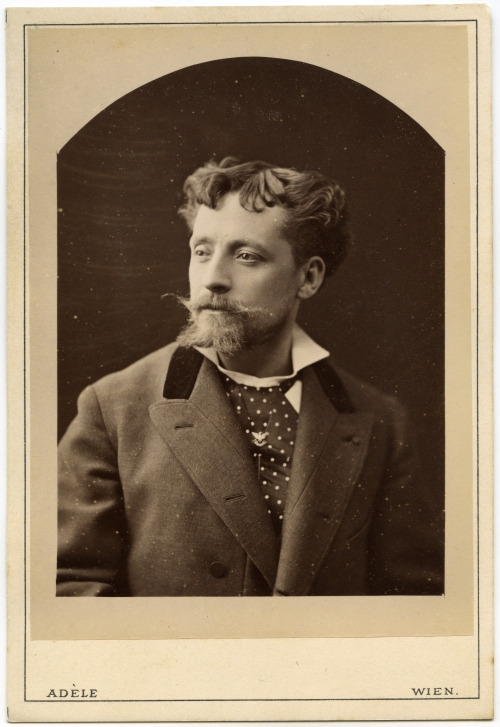
Victor Capoul (27 February 1839 – 18 February 1924) was a French operatic tenor with a lyric voice and a graceful singing style.
Victor Capoul began his studies in Toulouse. He was admitted to the Conservatoire de Paris in 1859, where, as a pupil of Révial (singing) and Mocker (opéra comique), he won a first prize for the latter in 1861.
He was engaged at the Opéra-Comique the same year and made his debut on 26 August as Daniel in Adolphe Adam's Le Chalet. He sang other roles in the repertoire such as in La fille du régiment, La part du diable, La dame blanche, Le pré aux clercs and L'étoile du nord, until leaving in 1870. He also created the roles of Renaud in Lefébure-Wély's 1861 opera Les Recruteurs, Eustache in Les Absents by Ferdinand Poise on 26 October 1864, Horace in the two-act version of Gounod's opera La colombe on 7 June 1866, Le Marquis de Kerdrel in La grand'tante on 3 April 1867, Gaston de Maillepré in Le premier jour de bonheur on 15 February 1868, and Valentin/Vert-Vert in Offenbach's opéra comique Vert-Vert on 10 March 1869.
On 1 July 1864, during a temporary closure of the Salle Favart, Capoul appeared with Balbi in The Barber of Seville at the Théâtre Porte-Saint-Martin. He took part in the performance of the prize cantata at the Conservatoire Renaud dans les jardins d'Armide, words by Camille du Locle, music by Charles Lenepveu on 4 January 1866.[4] In 1866 he was involved in a dispute between the Opéra-Comique and the Théâtre Lyrique, which was attempting to engage him—both for his voice and his looks—as Roméo in the premiere of Gounod's opera Roméo et Juliette, the part eventually going to Michot.[5] In the same year he saw success in the title role of Joseph at the Salle Favart.
He was invited to London for a season in 1871 by Mapleson, appearing in Faust at Drury Lane and returned again until 1875; later from 1877 he was seen in Fra Diavolo at Covent Garden (which he had first sung at the Opéra-Comique in 1870), followed by Almaviva, Ernesto and Elvino.[1] After several tours around Europe, to Saint Petersburg, Moscow and Vienna, he returned to Paris, and appeared in the premieres of Les amants de Vérone at the Théâtre Ventadour, Paul et Virginie, at the Gaité; Saïs (by Marguerite Olagnier)[6] at the Théâtre de la Renaissance and Jocelyn at the Château d'Eau.
He took part in the concert given at the Trocadero on 8 June 1887, for a benefit for the victims of the recent fire at the Opéra-Comique.
In the US, he made his debut at the Academy of Music in 1871. Later, he appeared in the first season, that of 1883–84, at the New York Metropolitan Opera in Faust (title role), Mignon (Wilhelm Meister), La traviata (Alfredo) and Roméo et Juliette (Tybalt).
He collaborated on the libretto of Jocelyn, by Godard (première 25 February 1888 at La Monnaie, Brussels), and sang in the Paris premiere at the Théâtre du Chàteau-d'Eau on 13 October 1888. His one known recording is of an aria from this opera. It was made in Paris in 1905 for the Fonotipia Company and shows a voice past its prime. By this time Capoul was almost stone deaf. According to Scott however (Record of Singing: 1978) the mid-19th century style remains.
In 1899, Pedro Gailhard recruited him to become artistic director of the Opéra de Paris, of which establishment Gailhard was director. Capoul's later life was clouded by financial and other difficulties, and he died in reduced circumstances in Pujaudran, France on 18 February 1924.
4 notes
·
View notes
Audio
current mood
#le pré aux clercs#ferdinand herold#jours de mon enfance#spotify opera mood#opera tag#opera#this is really beautiful#and I love the violin solo at the beginning!!#joyce el-khoury
0 notes
Photo

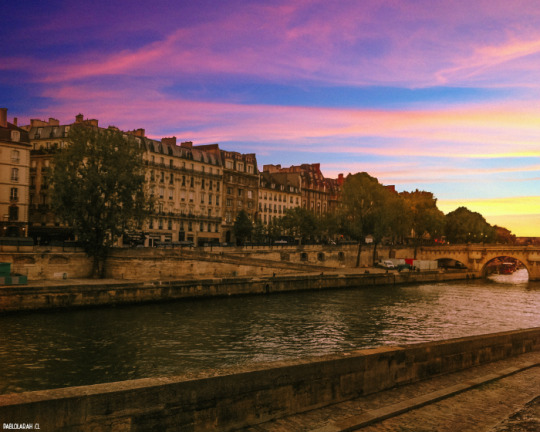
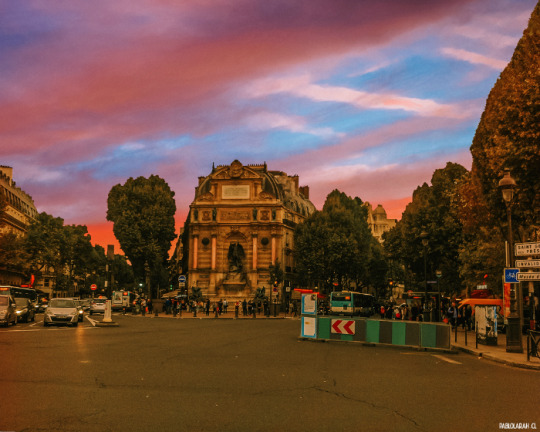
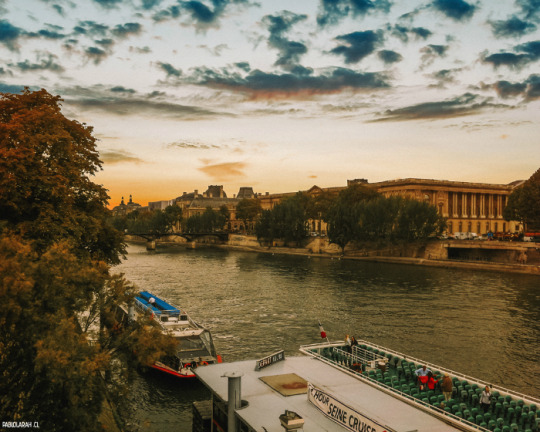
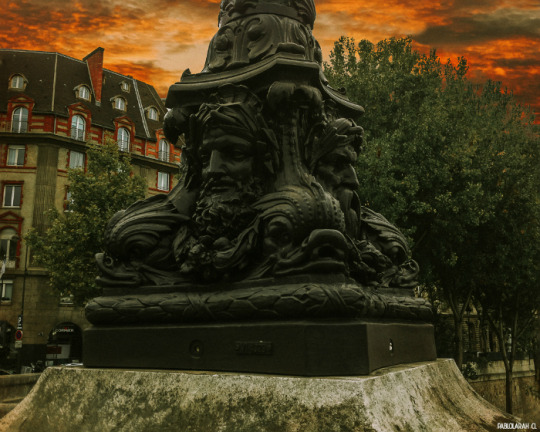
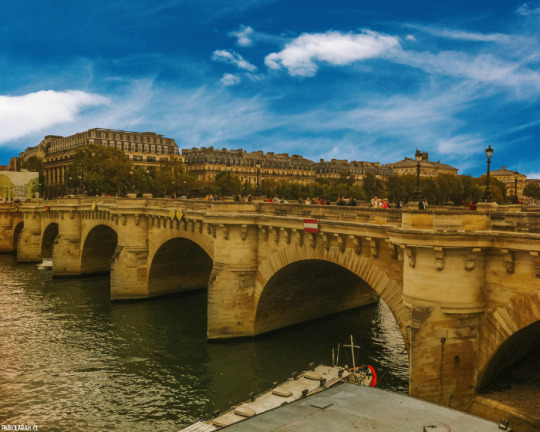

Quarantine Diaries
The Île de la Cité is one of two remaining natural river islands in the Seine within the city of Paris (the other being the Île Saint-Louis). It is the centre of Paris and the location where the medieval city was refounded.
The western end of the islet has held a palace since Merovingian times, and its eastern end since the same period has been consecrated to religion, especially after the 10th-century construction of a cathedral preceding today's Notre-Dame. The land between the two was, until the 1850s, largely residential and commercial, but has since been filled by the city's Prefecture de Police, Palais de Justice, Hôtel-Dieu hospital, and Tribunal de commerce.
The Place Saint-Michel is a public square in the Latin Quarter, on the borderline between the fifth and sixth arrondissements of Paris, France. It lies on the left bank of the river Seine facing the Île de la Cité, to which it is linked by the Pont Saint-Michel.
Quai Malaquais
Louis Batiffol (1932) raconte que, dans son entreprise foncière au Pré-aux-Clercs, qui appartenait à l'Université, la reine Margot « emprunte pour payer ses acquisitions, échange, trafique, à toutes conditions, beaucoup suspectes, d'où le nom de Malacquet — mal acquis — donné au quai qui borde son domaine sur la Seine ». Cette affirmation est fantaisiste. L'origine de ce nom vient plutôt du fait qu'à cet endroit, il était difficile d'accoster.
One finds on the Pont-Neuf an infinity of people who give tickets, some put fallen teeth back in, and others make crystal eyes; there are those who cure incurable illnesses; those who claim to have discovered the virtues of some powdered stones to white and to beautify the face. This one claims he makes old men young; there are those who remove wrinkles from the forehead and the eyes, who make wooden legs to repair the violence of bombs; finally everybody is so applied to work, so strongly and continually, that the devil can tempt no one but on Holidays and Sundays. .
Saint-Evremoniana; Ou, Receuil [I.E. Recueil] de Diverses Pieces Curieuses. Avec Des Pensees Judicieuses, de Beaux Traits D'Histoire, & Des Remarques Tres Utiles, de Monsieur de Saint-Evremont. .
Charles Cotolendi . .
#IledelaCite #architecture #arquitectura #arquitetura #StreetPhotography #StreetPhotographyInColors #IG_StreetPhotography #StreetPhotographyCommunity #StreetPhoto #PeopleInFrame #PhotoDocumentary #StreetPhotographyInternational #StreetPhotographyWorldwide #CandidShots #Paris #France #Europe . . . . Made with ❤ & @photoshop .
0 notes
Photo
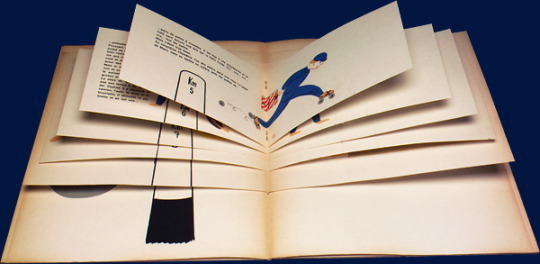
Le Cadeau de MarcBruno MunariParis, Éditions du Pré aux Clercs, "Livre-surprise n° 2", 1946 BnF, Estampes et Photographie, Ka 566 (2) -4
Désirant procurer à son fils âgé de cinq ans des livres simples correspondant à son âge et ne trouvant rien de satisfaisant dans la production existante, Bruno Munari réalise en 1945 sept albums édités par Mondadori associant une histoire courte qu'il invente ou adapte et un procédé de mise en pages créant des effets de surprise par des volets, dans le premier titre Mai contenti et dans de nombreux autres, ou par le format variable des pages, dans L'Uomo del camion, traduit librement en français par Le Cadeau de Marc. Cumulant les incidents de locomotion de kilomètre en kilomètre, le papa de Marc, qui porte un cadeau d'anniversaire à son petit garçon, voit ses chances de parvenir à temps à la maison se réduire comme les pages du livre, mais à la fin la surprise du cadeau est à la mesure de tous ses efforts. (C. P.)
0 notes